The Auster Aiglet - From Nelson to MOTAT
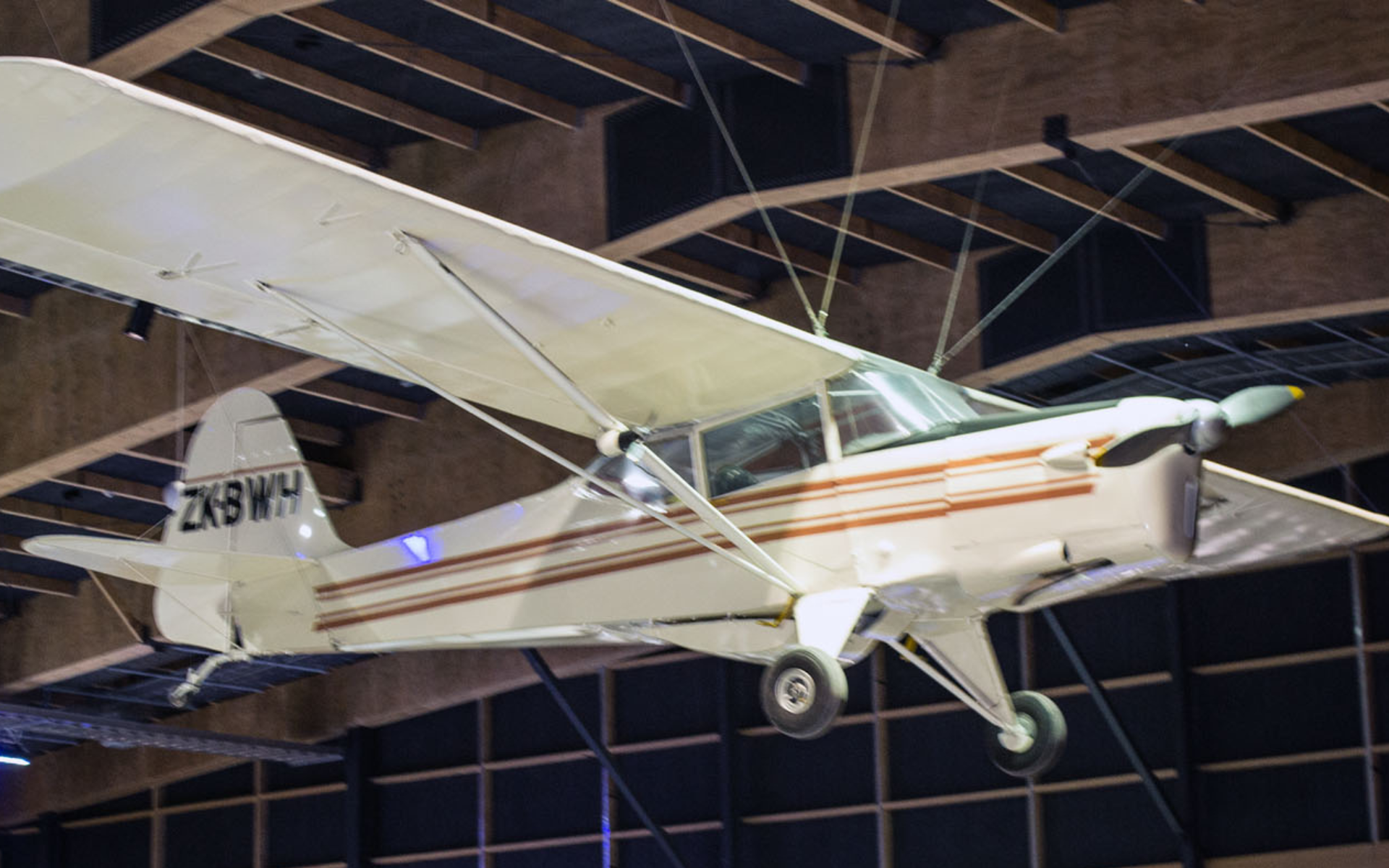
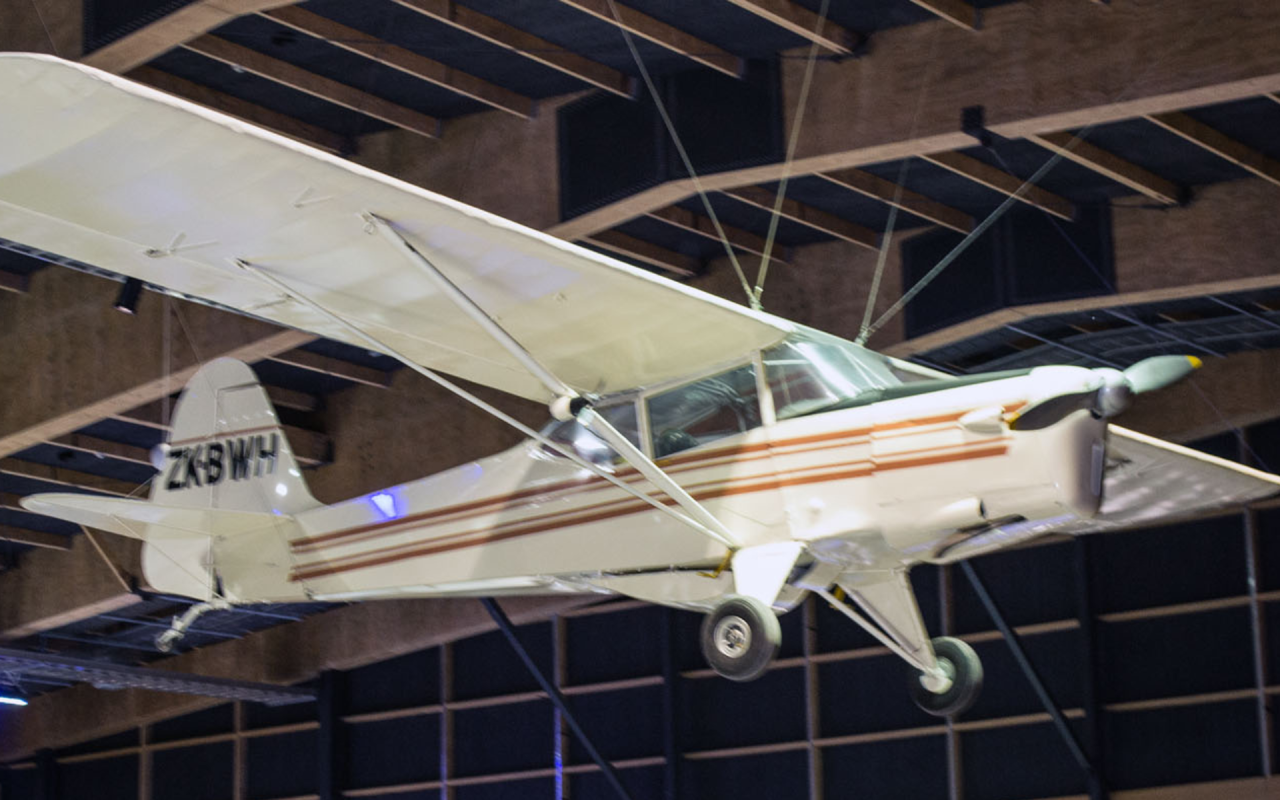
Taylorcraft Aeroplanes (England) Ltd built high-wing light monoplanes based on a Taylorcraft Corporation of America design which were used for observation work during the Second World War. Towards the end of the war the company saw an opening for an economical light aeroplane suitable for private use and, as a result, the last of the wartime designs, a Taylorcraft Auster Mk V was modified to take a lower-powered engine. The design was initially called the Taylorcraft-Auster J/1 Autocrat.
The Autocrat was the first post-war civil light aeroplane to go into production. Over 400 were built and sold for just over £1,000 each. A small number of variants were built and the Autocrat became the basis for a family of light aircraft. The Autocrat was used by individual pilots, aero clubs and by small charter firms for passenger flights, banner towing and photography. Many J/1s were converted to J-1N Alpha standard with a higher fin and fitted with a 130 h.p. Gipsy Major engine, as used in the J-1B Aiglet, which went into production in 1950. Seventy Aiglets were built.
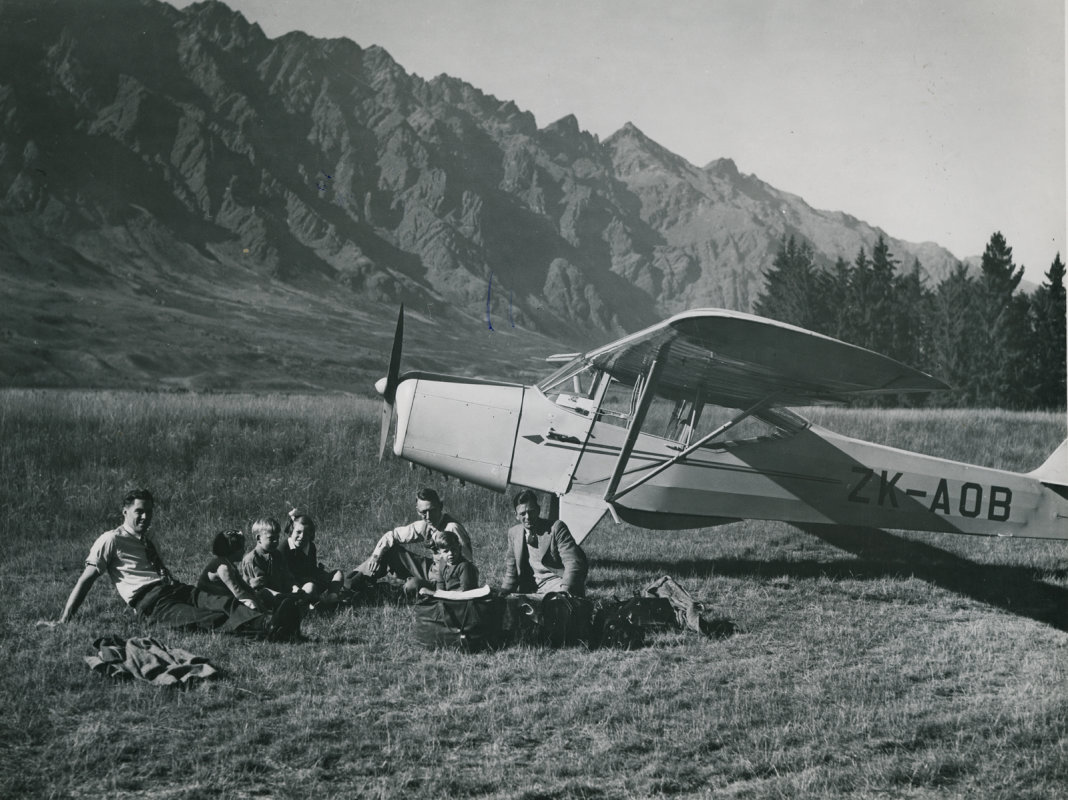
Auster sold most of its Aiglets to Australia and New Zealand. The majority were exported engineless to Kingsford Smith Aviation Services in Sydney where they were completed and tested before delivery. In Australasia, the Aiglet was particularly suited to use by agricultural spraying and top-dressing contractors. The spray bars were installed using supports on the Aiglet's fuselage under surfaces and the wing struts.
At Timaru airport, and associated with the Timaru Aero Club, Harry Cederman established Auster Air Services. He owned two Auster Aiglets which had been used for aerial topdressing but had both been involved in accidents. From these two aircraft, Cederman built ZK-BWH and sold it to Les Barclay of Nelson in the 1950s.
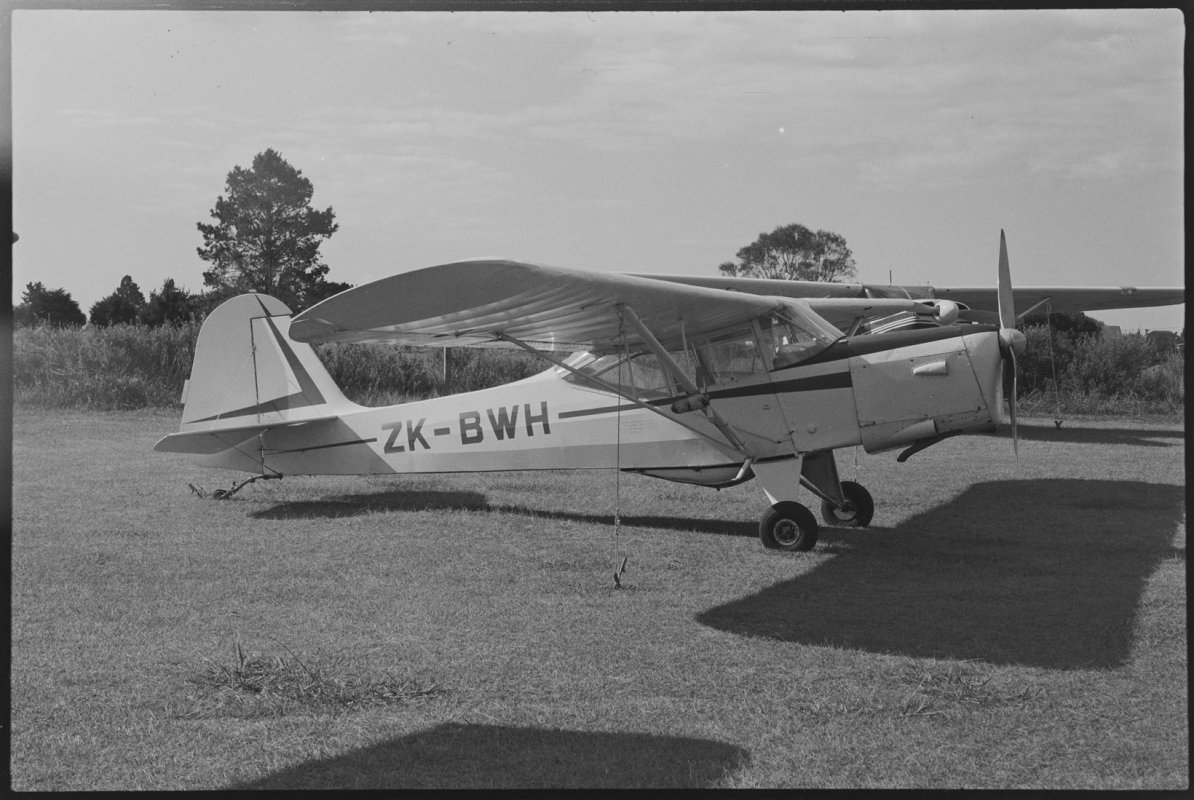
Peter Malone, a Nelson veterinarian and pilot, would hire ZK-BWH when he needed to make calls to outlying farms which were difficult or impossible to reach by road. Malone bought the aircraft from Les Barclay in around 1960 and used it for the next 21 years to provide veterinary services in the Nelson-West Coast area.
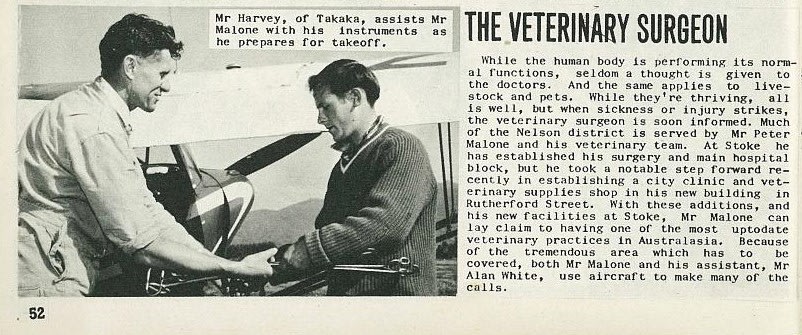
In 1981, Malone was approached by members of the Royal New Zealand Air Force (RNZAF) based at Woodbourne air base near Blenheim to see if he would sell them ZK-BWH as they wished to donate it to the proposed RNZAF Museum at Wigram. The RNZAF had operated six J/5 aircraft (NZ1701-1706) and a sole Mark 7C Antarctic-modified aircraft (NZ1707). The latter had crashed and been gifted to MOTAT in 1967. This aircraft, originally WE563, had been the backup aircraft for the 1955-58 Commonwealth Trans-Antarctic Expedition where it was used for reconnaissance.
WE563 was purchased from the Royal Air Force by RNZAF and began its service in 1956 as NZ1707. At this point, it was only fitted with wheels but skis were later attached. It was dispatched to the Antarctic aboard HMNZS Endeavour in December 1956 fitted with floats.
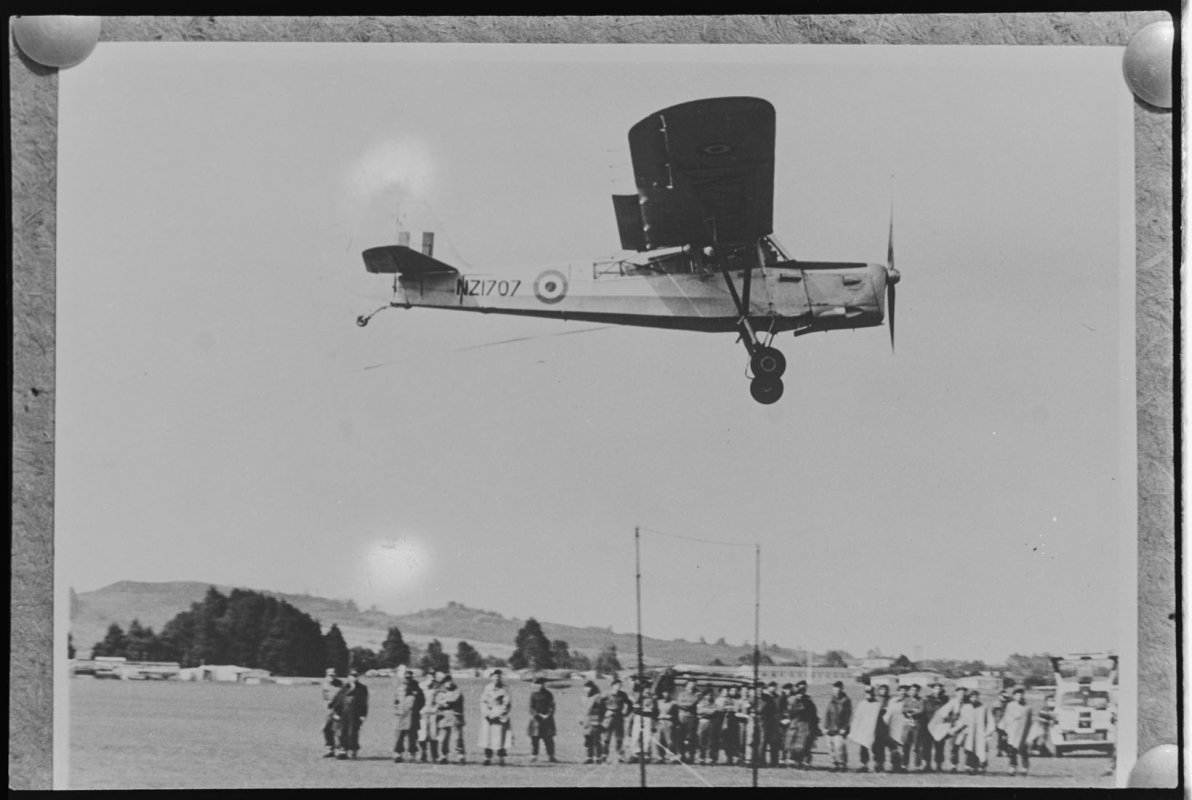
NZ1707 first flew in the Antarctic on 29 January 1957 and was shipped back to New Zealand in early 1958, but continued to be used in the Antarctic until the 1960 season. In 1962 it went to Wigram to No.1 Reconnaissance Squadron, and then later to No.3 Squadron for Army cooperation work. It crashed in Kaipara Harbour on 22 August 1966 and was salvaged and retrieved to Hobsonville by RNZAF Iroquois.
The aircraft was then written off the RNZAF books and presented to MOTAT after being restored by trainees at No.1 TTS, Hobsonville. MOTAT was unwilling to give NZ1707 back to the RNZAF for the proposed museum, which was why Malone had been asked to sell his Aiglet.
Malone agreed to sell. The need for a flying veterinary service had diminished as new practices were established in the areas he had previously flown to. He now considered the Auster as a bit of a ‘dinosaur’ and preferred flying more modern aircraft. He also found the idea of his Auster becoming part of the Air Force museum’s collection appealing and sold it to them for around $8000. He flew ZK-BWH from Nelson to Woodbourne air base where it was repainted and given RNZAF roundels and took part in an air pageant to raise funds for the museum at Wigram. This was one of its last flights.
As it turned out, the RNZAF museum did not particularly want ZK-BWH because, although it was an Auster Aiglet, it did not have a history with the Air Force, so in May 1985, an agreement was signed by the RNZAF Museum Trust Board and MOTAT to swap it for NZ1707 (which is currently on display at RNZAF Museum, Wigram in Antarctic colours).
After ZK-BWH arrived at MOTAT, it was painted as a fictitious NZ1708, to reflect the aircraft used in the Commonwealth Trans-Antarctic Expedition, but it is now painted in civil livery. It has a cream-coloured body and wing with four orange horizontal stripes running the length of the body, one orange horizontal stripe on the tail and is painted with ZK-BWH underneath. It has a 2-blade, grey propeller with yellow tips.
Auster Aiglet J1B ZK-BWH
Monoplane, 4-seater light liaison or observation aircraft.
Accommodation: Perspex enclosed cabin seating, 2 side-by-side with complete dual controls.
Single, double-bladed propeller.
Fixed rubber tyres, undercarriage.
Welded tube steel with fabric covering.
2 wing struts from the fuselage to the underside of each wing.
The engine is forward of the wings.
The exhaust is on the underside of the aircraft.
Length: 23 ft 8 in (7.21 m)
Wingspan: 36 ft 0 in (10.97 m)
Height: 6 ft 6 in (1.98 m)
Wing area: 185 ft2 (17.19 m2)
Empty weight: 1,223 lb (555 kg)
Gross weight: 2,000 lb (907 kg)
Power: 1 × de Havilland Gypsy motor: 4-cylinder inverted air-cooled in-line, 130 hp (97 kW)
Significance
The Auster Aiglet was a light civilian aircraft that was used by aero clubs for leisure and to teach people to fly in the years following the Second World War. These were the years when flying became a much more accessible pursuit for people, thanks to aircraft like the Aiglet. In New Zealand, it was also used as an aerial topdressing aircraft and, as such, ZK-BWH helps to tell the story of the development of New Zealand grass pasture after 1945. The Aiglet could land on a short airstrip which meant that it could refuel and reload fertiliser in remote areas. The aircraft has remained popular (particularly in the South Island) for farmers as a utility runabout.
ZK-BWH also has an important story to tell about the development of rural veterinary services in New Zealand. Its ability to land on short airstrips was essential for Peter Malone to be able to make house calls to remote farms, which would otherwise have been almost inaccessible to a veterinarian. Malone was awarded an OBE for his work in developing veterinary services.
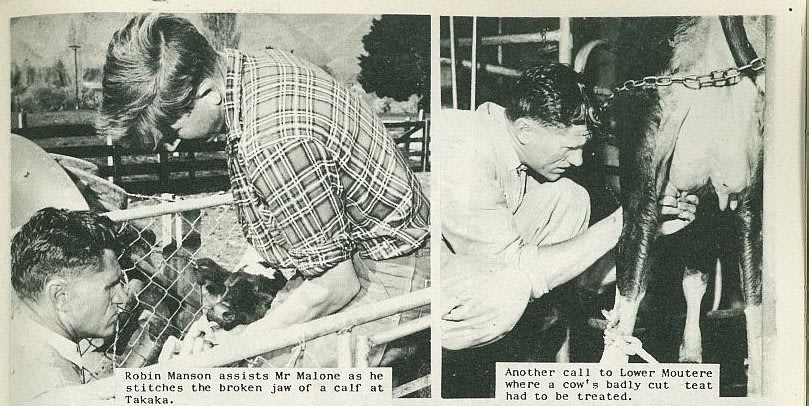
For New Zealand, the Auster Aiglet also has its association with Sir Edmund Hillary and the 1955-58 Commonwealth Trans-Antarctic Expedition (TAE). The TAE aimed to complete the first overland crossing of the Antarctic Continent – a 3473-kilometre journey from the Weddell Sea, via the South Pole, to McMurdo Sound. It was timed to capitalise on the global interest already generated by the International Geophysical Year programme of 1957-58. The TAE consisted of two teams:
• the Crossing Party, led by the British explorer, Dr (later Sir)Vivian Fuchs
• the Ross Sea Party, led by New Zealand explorer, Sir Edmund Hillary.
![Image: Unknown Photographer. 15 Dec 1957-20 Dec 1957. [Edmund Hillary, Murray Ellis, Jim Bates, Peter Mulgrew, and Derek Wright at Depot 700], PHO-2017-2. Walsh Memorial Library, The Museum of Transport and Technology (MOTAT).](https://images.ctfassets.net/mplktqcfflsk/48RDpa1ppEeCZj4IDx7xVw/91e841cecc0aa7ce4ad0b35b53f00ae0/PHO-2017-2.001.jpg?w=1025&h=800&fl=progressive&q=85&fm=jpg&bg=transparent)
Taylorcraft Aeroplanes (England) Ltd
In 1938 Alexander Lance Wykes, a businessman and flying enthusiast travelled to North America and negotiated a licence agreement to build an American-designed light aeroplane in England. The licence obtained was for the manufacture of the Taylorcraft Model B aeroplane.
On 21 November 1938, Taylorcraft Aeroplanes (England) Ltd was registered as a private company with production and selling rights for the British Empire and Europe. Wykes was the managing director of Crowthers Ltd, a Leicestershire company that manufactured textile machinery. Construction of the Taylorcraft aircraft commenced in rented premises behind Crowthers in February 1939. The first aircraft was completed by 24 April 1939 and registered G-AFNW.
The finalised aircraft differed from its American counterpart, as it had to be strengthened to comply with British Civil Aviation airworthiness requirements. It was therefore designated a Taylorcraft ‘Plus C’ model. Around 1600 were built during the Second World War and used as military liaison and observation aircraft.
The name of the company was changed to Auster Aircraft Ltd in March 1946, and production shifted to Rearsby aerodrome in Leicestershire at the same time. The company designed and produced numerous variants of its original civil aircraft for training, touring, observations, artillery spotting, crop spraying, aerial advertising, and air racing. The aircraft could be fitted with float and ski conversions.
In 1960 Auster Aircraft Limited was taken over and absorbed into British Executive and General Aviation Ltd (BEAGLE). Auster design and development continued within the new corporate framework, but the Auster name was dropped at this time. Auster appears to have been the Roman god of the south wind. An aiglet is a metal sheath or tag at the end of a shoelace or ribbon; or any ornamental pendant.
Story by Megan Hutching, MOTAT
Citation:
Hutching, Megan, 2022. The Auster Aiglet - From Nelson to MOTAT. MOTAT Museum of Transport and Technology. Published: 7 October 2022. URL: https://www.motat.nz/collections-and-stories/stories/the-auster-aiglet-from-nelson-to-motat
Find more stories about the past, present, and future technology of Aotearoa here.
Useful sources
Auster Heritage Group www.austerhg.org
http://www.scottbase50years.co.nz/history/tae_iggy/expedition/info.htm